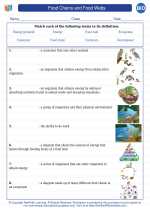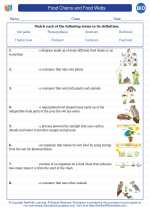Coriolis Effect Explanation
The Coriolis Effect is a phenomenon that causes moving air and water to appear to bend to the right in the northern hemisphere and to the left in the southern hemisphere. This effect is due to the rotation of the Earth on its axis. As the Earth rotates, different points on the planet move at different speeds. This difference in speed causes moving air and water to be deflected from their straight-line paths, creating the Coriolis Effect.
Key Points to Remember
- The Coriolis Effect is caused by the rotation of the Earth on its axis.
- In the northern hemisphere, the Coriolis Effect causes moving objects to bend to the right, while in the southern hemisphere, it causes them to bend to the left.
- The Coriolis Effect has a significant impact on global wind patterns, ocean currents, and the trajectory of objects such as missiles and aircraft.
Study Guide
When studying the Coriolis Effect, it's important to understand the following key concepts:
Earth's Rotation
Be familiar with the fact that the Earth rotates on its axis from west to east, and understand how this rotation affects the movement of air and water on the planet.
Hemispheric Differences
Understand the differences in the direction of the Coriolis Effect in the northern and southern hemispheres, and be able to explain why it occurs in the opposite direction in each hemisphere.
Impact on Global Systems
Study the impact of the Coriolis Effect on global wind patterns, ocean currents, and other atmospheric phenomena. Understand how this effect influences weather patterns and climate.
Real-World Applications
Explore real-world applications of the Coriolis Effect, such as its influence on the trajectory of long-range projectiles, the navigation of aircraft and ships, and the design of certain industrial processes.
Practice Questions
- Explain the relationship between the Coriolis Effect and the rotation of the Earth.
- Describe the direction of the Coriolis Effect in the northern and southern hemispheres, and provide an example of each.
- How does the Coriolis Effect influence global wind patterns and ocean currents?
- Discuss a real-world example where the Coriolis Effect is important for understanding a specific phenomenon or process.
◂Biology Worksheets and Study Guides High School. Food Chains and Food Webs

 Worksheet/Answer key
Worksheet/Answer key
 Worksheet/Answer key
Worksheet/Answer key
 Vocabulary/Answer key
Vocabulary/Answer key
 Vocabulary/Answer key
Vocabulary/Answer key
